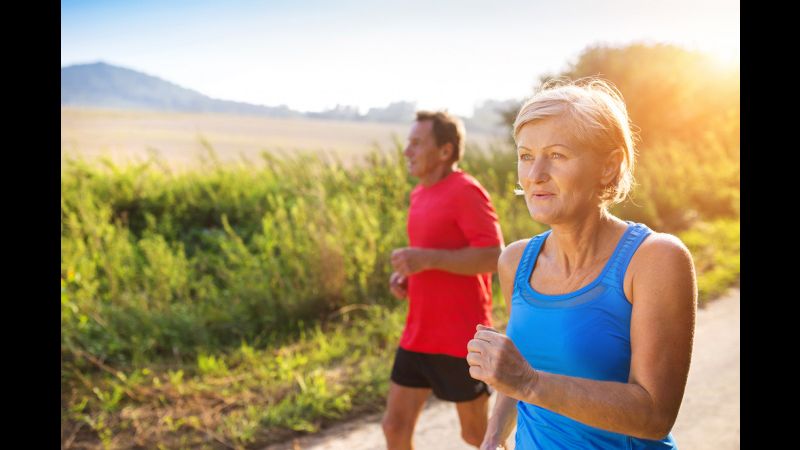Maybe it starts with some mild back pain in your 30’s, which escalates in your 40’s. By your 50’s, perhaps it’s joint pain and muscle aches. And then in your 60’s it could be a knee or hip replacement.
It’s not uncommon for the human body to break down over time, but with the right mix of diet and exercise it’s possible to fight back against the potentially detrimental effects of aging. Since we also naturally experience muscle loss as we age, incorporating strength training exercises into your fitness routine is essential, along with exercises to improve balance.
Strength Training Exercises For Seniors
In an article entitled, “Slowing Down Muscle Loss,” on the Wellness website run by the University of California-Berkeley, the author points out that there is a natural progression to muscle loss–approximately 30 percent of muscle mass is lost between the ages of 50 and 70. This muscle loss, particularly in the arms and legs, makes it more likely to experience falls with age.
Participating in regular exercise that aims to strengthen the muscles in your arms and legs is the best way to help combat muscle loss and falls. Here are some great exercises for seniors that focus on building strength, some of which can even be done at home:
- Upper body exercises with weights. The National Institutes of Health recommends that seniors incorporate exercises using weights to target muscles in the upper body. They include sample exercises, along with photos and step-by-step instructions on their website. These sample exercises that they mention include wrist curls, arm curls, side arm raises, elbow extensions, chair dips and seated rows with a resistance band. When working out with weights, be sure to start with the lowest possible weight so as not to injure yourself during your workout.
- Lower body exercises. The National Institutes of Health also recommends focusing on trying exercises for seniors that target the lower body as well. The exercises they recommend include back leg raises, knee curls and toe raises. As with the upper body exercises mentioned above, the NIH website has photos and step-by-step instructions of these exercises on their website.
- Home exercises without weights. Fitness for seniors doesn’t necessarily have to include the use of weights, especially if you have not worked out with weights in the past. These strengthening exercises can all be done at home and don’t require you to use weights.
- Pool exercises. For those seniors who struggle with mobility issues or arthritis, strength training with weights might not seem like a viable option. Participating in exercises for seniors in a pool, such as aqua jogging, flutter kicking or standing water pushups, is a great way to go easy on the rest of your body while improving your strength.

Exercises To Improve Balance
Fitness for seniors, in addition to including exercises for strength, should also include exercises to improve balance. When it comes to balance, research overwhelmingly supports two types of exercises: Yoga and Tai Chi.
Yoga involves moving through a series of poses that help to strengthen and/or improve your balance, depending on which poses you are doing. It also aims to sync up the physical movements with your breathing, to not only help your body, but also to calm the mind. Research also shows that yoga poses that focus on the back “improves posture stability and balance and may lower the risk of trips and falls, which often lead to serious injury in people over the age of 65.”
Tai Chi has also been identified as one of the most beneficial exercises to improve balance in seniors. Harvard Health has found that “with its integrative approach that strengthens the body while focusing the mind, tai chi addresses a range of physical and mental health issues—including bone strength, joint stability, cardiovascular health, immunity, and emotional well-being. Tai chi is especially useful for improving balance and preventing falls—a major concern for older adults.” They even cite a study that found that Tai Chi can “reduce falls in seniors by up to 45%.”
More Than Just Exercise
Of course, fitness is just one component of a healthy lifestyle that helps to increase longevity and keep seniors happy at home longer. A medical alert system is also a great way to help keep seniors safe at home. And while investing in a Medical Guardian medical alert system cannot prevent falls from occurring, it can minimize injuries and recovery time by providing you with immediate access to help should you have an accident at home, or at the gym.

